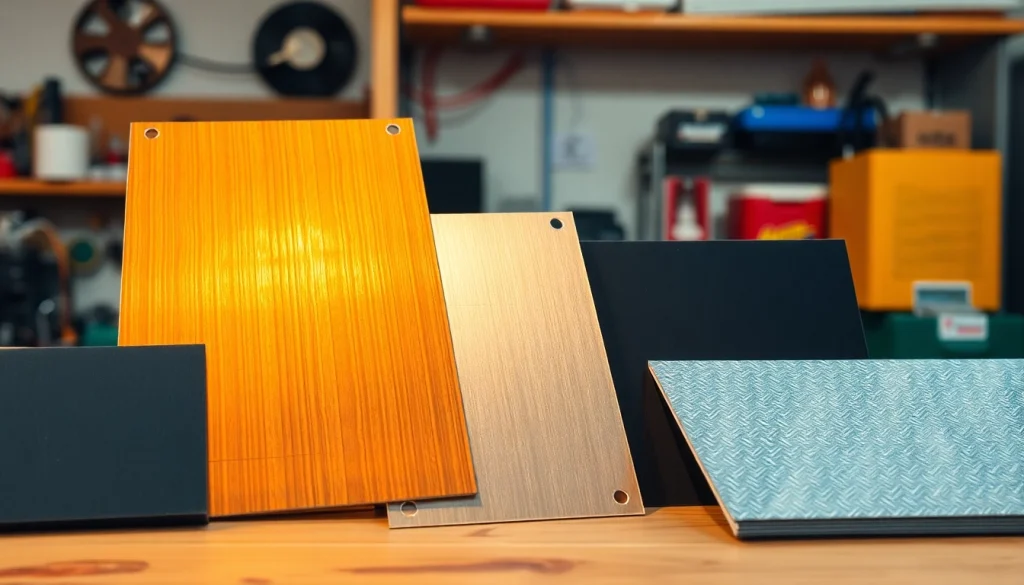Understanding Electromagnetic Shielding Materials
In an increasingly technology-driven world, the significance of electromagnetic shielding materials cannot be overstated. These materials are essential for protecting sensitive electronic devices from electromagnetic interference (EMI) that can disrupt functionality and cause the malfunction of critical operations. Various industries, including telecommunications, aerospace, and medical technology, employ electromagnetic shielding to ensure efficient performance and security against unwanted electromagnetic signals. This article explores the different aspects of electromagnetic shielding materials, their properties, types, applications, and future developments in the field.
What Are Electromagnetic Shielding Materials?
Electromagnetic shielding materials are designed to block or attenuate electromagnetic fields, which arise from electronic devices and signals. These materials can prevent both the emission of electromagnetic radiation and the penetration of external electromagnetic waves. The primary function of these materials is to reduce interference, ensuring that electronic devices operate within their intended parameters.
The effectiveness of electromagnetic shielding materials is measured in decibels (dB), which indicate the material’s ability to attenuate electromagnetic waves across varying frequencies. Antenna technology, wireless communications, and electronic circuit design often rely heavily on using these materials to mitigate unwanted signals during operation.
Key Properties of Effective Shielding Materials
For electromagnetic shielding materials to be effective, they must possess several key properties, including:
- High Conductivity: Effective shielding materials should feature high electrical conductivity to reflect and absorb electromagnetic waves efficiently. Copper and aluminum are prime examples.
- Thickness: The thickness of the material is critical, as thicker materials tend to provide enhanced shielding abilities. However, the balance between weight and effectiveness must be considered in applications where portability is paramount.
- Mechanical Strength: Shielding materials should offer excellent durability to withstand environmental stress and potential physical damage, especially in industrial applications.
- Flexibility and Formability: Many applications require flexible materials, making it a priority for shielding fabrics and foams. These materials must maintain their shielding effectiveness while being incorporated into various product designs.
- Frequency Range Attenuation: Effective materials should be able to attenuate a wide range of frequencies, particularly in sensitive electronic applications where different operating frequencies are prevalent.
Common Types of Electromagnetic Shielding Materials
Different types of electromagnetic shielding materials exist, each with unique properties and applications. Common categories include:
- Metals: Metals such as copper, aluminum, steel, and brass are widely used due to their excellent conductivity and shielding capabilities.
- Conductive Plastics: These incorporate conductive fillers into a plastic matrix, offering lightweight options with flexibility.
- Metal Foams: Suitable for lightweight applications, metal foams reduce weight while maintaining good electromagnetic interference reduction.
- Composite Materials: Combinations of materials, including metal and polymer composites, enhance durability and flexibility, catering to a diverse array of applications.
Types of Electromagnetic Shielding Materials
Metals Used in Electromagnetic Shielding
When discussing electromagnetic shielding materials, certain metals stand out due to their unique conductive properties:
- Copper: Known for its superior conductivity, copper is often chosen for high-performance applications requiring optimal signal integrity. Its cost-effectiveness and ease of fabrication further add to its attractiveness.
- Aluminum: Lightweight and corrosion-resistant, aluminum serves as an excellent choice for mobile and consumer applications. It’s commonly utilized in the creation of shielding cabinets and enclosures.
- Steel: While steel offers less conductivity than copper and aluminum, its structural strength makes it ideal for protective enclosures in rugged environments.
- Nickel: Often used as a plating or alloy component, nickel aids in improving corrosion resistance while adding additional shielding properties.
Combination Materials for Enhanced Shielding
To achieve the desired functionality without compromising on weight and flexibility, combination materials are increasingly popular. For example:
- Nanocomposites: These materials combine polymers with conductive nanoparticles, enhancing their protective qualities while maintaining a lightweight design.
- Metal-Polymer Blends: By blending metals such as copper with flexible polymers, manufacturers produce materials suitable for a variety of applications, including wearable electronics.
Flexible and Rigid Shielding Solutions
Depending on the specific requirements of the application, shielding can be rigid or flexible:
- Flexible Shielding Solutions: Typically found in textile applications, flexible shielding solutions cater to consumer electronics and wearables, allowing manufacturers to create garments that shield against disruptive signals.
- Rigid Shielding Solutions: Ideal for industrial applications, rigid shielding entails materials that provide structural stability while protecting sensitive equipment from EMI.
Applications of Electromagnetic Shielding Materials
EMI Shielding in Electronics
Electronics constitute the most common domain for EMC shielding. Devices such as laptops, smartphones, and tablets are all susceptible to EMI that can cause malfunctions. Key applications include:
- Printed Circuit Boards (PCBs): Incorporating shielding into PCBs helps maintain signal integrity and prevent undesired crosstalk.
- Enclosures: Many electronic devices are housed in metal enclosures, such as computer cases, that protect sensitive components from external emissions and interference.
Industrial and Military Uses
In industrial environments, electromagnetic shielding materials ensure sensitive equipment operates correctly while maintaining safety standards. Military applications also emphasize shielding to protect systems against hostile electronic warfare and ensure mission success.
Common uses include:
- Aircraft and Aerospace: Shielding is critical in avionics to protect electronic devices from EMI and ensure reliable communication systems.
- Military Equipment: Ruggedized electronic systems require robust shielding methods to withstand harsh conditions and avoid interference.
Consumer Electronics and Personal Devices
As consumers increasingly rely on portable devices, the demand for effective shielding techniques has grown. Devices such as wireless routers, smartphones, and servers rely on innovative shielding solutions to maintain optimal performance without degradation or interference.
Choosing the Right Electromagnetic Shielding Material
Assessment Criteria for Different Applications
Choosing the right electromagnetic shielding material depends on several factors, including:
- Environment: Consideration of exposure to environmental factors, both physical and electromagnetic, will inform the optimal choice of material.
- Application Specificity: Assessing whether the application is commercial, industrial, or consumer-based can affect material selection significantly.
Cost vs. Performance in Shielding Materials
Pricing often reflects the material’s performance capabilities. Advanced composites may incur higher initial costs, yet they provide superior shielding performance in specialized applications.
Both short-term and long-term costs, including maintenance and replacements, should be weighed against the longevity and performance of the materials.
Long-term Considerations for Shielding Solutions
As technology evolves, the demand for shielding will likely increase. Long-term considerations include:
- Scalability: Selecting materials that can adapt to future technological advancements will ensure continued effectiveness.
- Environmental Impact: Understanding the material sourcing and potential environmental effects of various shielding solutions is critical for sustainable practices.
The Future of Electromagnetic Shielding Materials
Innovations in Shielding Technology
The field of electromagnetic shielding is poised for innovation. Emerging technologies, such as advanced nanomaterials and graphene-based composites, promise to deliver unparalleled performance and flexibility in shielding applications. Researchers are also exploring self-healing materials and smart technologies that adapt to ambient electromagnetic environments.
Environmental Impact and Material Sourcing
As industries become increasingly conscious of their environmental footprint, the sourcing of materials for electromagnetic shielding must align with sustainable practices. Utilizing recycled materials or developing biodegradable conductive materials are two areas of focus in researching new are methodologies.
Predictions for Market Trends
The market for electromagnetic shielding materials is expected to grow in response to the increasing prevalence of electronic devices, particularly with the ongoing expansion of the Internet of Things (IoT). Notably, this growth will drive demand for more sustainable and innovative shielding solutions suited for diverse applications.


